Ukraine, a country with a rich history, vibrant culture, and stunning landscapes, has much to offer. Despite the ongoing war between Russia and Ukraine, the nation stands firm and captivates the world.
This article explores 50 incredible facts about Ukraine, diving into its unique aspects, world records, and even some delicious cuisine. From the beautiful streets of Kiev to the intriguing Ukrainian customs, we’ll uncover the hidden gems that make this country truly special.
Remember that you determine which is the next country for 50 facts, write us a comment HERE and the country that is repeated the most becomes an article.
Contents
Ukraine’s Rich History and Unique Culture
What is Ukraine best known for?
Ukraine is best known for its rich history, which has shaped its unique culture and traditions. From the Kievan Rus, one of the most powerful states in medieval Europe, to the vibrant contemporary nation, Ukraine has been a melting pot of diverse ethnicities and cultures. It’s also recognized for its beautiful landscapes, from the picturesque Carpathian Mountains to the stunning Black Sea coastline. Furthermore, Ukraine is home to many UNESCO World Heritage sites, including the historic city of Lviv and the ancient Saint Sophia Cathedral in Kyiv.
What is unique about Ukrainian culture?
Ukrainian culture blends various influences, making it distinct and fascinating. Traditional Ukrainian customs, such as intricate embroidery and pysanky (decorated Easter eggs), showcase the nation’s artistic heritage. Like the lively Hopak, folk music, and dance reflect the country’s passion and spirit. Family and community are central to Ukrainian society, emphasizing hospitality and generosity. Additionally, Ukrainian cuisine, characterized by flavorful dishes like borscht and varenyky (dumplings), is integral to the cultural experience.
What is beautiful about Ukraine?
Ukraine’s natural beauty is breathtaking, with diverse landscapes that include lush forests, majestic mountains, and serene coastlines. The Carpathian Mountains, with their pristine lakes and dense forests, provide a perfect backdrop for hiking and skiing. The picturesque Crimean Peninsula, featuring warm beaches and rugged cliffs, is a haven for travelers seeking relaxation and adventure. The Danube Delta, a critical biosphere reserve, is home to countless bird species and unique ecosystems. Ukraine’s cities, such as Kyiv and Lviv, boast stunning architecture, historic landmarks, and vibrant street life, making them captivating tourist destinations.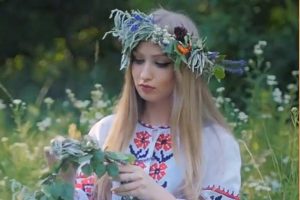
What language is spoken in Ukraine?
The official language of Ukraine is Ukrainian, a Slavic language closely related to Russian and Belarusian. It is spoken by approximately 67% of the population, making it the most widely spoken language in the country. Russian is also widely spoken, particularly in eastern and southern regions, and is a second language for many Ukrainians. In addition to Ukrainian and Russian, various minority languages are spoken throughout the country, including Romanian, Polish, and Hungarian. English is becoming increasingly popular, particularly among younger generations and in urban areas, as a means of communication and a vital skill for international business and tourism.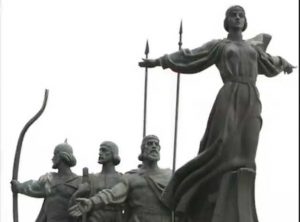
The Fascinating City of Kiev
What are three facts about Kiev?
- Architectural marvels: Kiev has many architectural wonders, such as the ancient Saint Sophia Cathedral, a UNESCO World Heritage site, and the golden-domed St. Michael’s Golden-Domed Monastery. The city’s mix of Byzantine, Baroque, and modern styles creates a captivating and unique skyline.
- Motherland Monument: Standing at an impressive 102 meters (335 feet) tall, the Motherland Monument is a colossal stainless steel statue symbolizing Ukraine’s independence and resilience. The monument is part of the National Museum of the History of Ukraine in the Second World War and offers panoramic views of Kiev from its observation deck.
- Cultural hub: As the capital of Ukraine, Kiev is the center of the country’s cultural life. The city boasts numerous museums, galleries, and theaters, including the Taras Shevchenko National Museum, the National Art Museum of Ukraine, and the Ivan Franko National Academic Drama Theatre, offering various artistic experiences for visitors.
Is Kyiv one of the oldest cities in the world?
While not among the oldest cities globally, Kyiv is indeed one of the oldest cities in Eastern Europe. Its history dates back over 1,500 years when it was founded in the late 9th century by the Varangians, a Scandinavian warrior elite. As the capital of the Kievan Rus, Kyiv played a crucial role in the region’s development and has witnessed numerous historical events that shaped the course of European history.
Which city is older, Kiev or Moscow?
Kiev is older than Moscow. Founded in the late 9th century, Kiev predates the founding of Moscow, which was established in 1147. As the center of the Kievan Rus, Kiev was a powerful and influential city in medieval Europe. At the same time, Moscow only began to gain prominence later, particularly during the reign of Ivan the Terrible in the 16th century.
Did the Vikings find Kiev?
Kiev was founded by the Vikings, specifically the Varangians, a Scandinavian warrior elite. According to the „Primary Chronicle,“ a medieval East Slavic historical record, the Varangian chieftain Oleg and the brothers Kyi, Shchek, and Khoryv established the city in the late 9th century. The Varangians played a crucial role in forming the Kievan Rus, an early medieval state that laid the foundation for the modern nations of Ukraine, Russia, and Belarus.
Kiev’s Transformation and Uniqueness
Was Kiev destroyed in WW2?
Kiev suffered significant damage during World War II, with many of its historic landmarks and buildings being destroyed or heavily damaged. Nazi Germany occupied the city from September 1941 until November 1943, during which time it endured severe destruction, deportations, and mass killings, such as the horrific Babi Yar massacre. After the war, extensive reconstruction efforts took place to restore and rebuild the city, resulting in a mix of architectural styles reflecting its pre-war heritage and post-war modernization.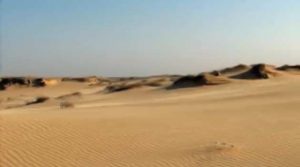
Why was Kiev changed to Kyiv?
The change from Kiev to Kyiv resulted from Ukraine’s efforts to assert its linguistic and cultural independence following the dissolution of the Soviet Union. The name „Kiev“ is a transliteration of the Russian word for the city (Киев), while „Kyiv“ is a transliteration of the Ukrainian name (Київ). By adopting the Ukrainian spelling, the country aims to reinforce its national identity and distance itself from the Russian influence that characterized much of its modern history.
What is Kiev best known for?
Kiev is best known for its rich history, stunning architecture, and vibrant cultural scene. As Ukraine’s capital and the Kievan Rus cradle, the city has played a central role in shaping the region’s history. Its most iconic landmarks include the ancient Saint Sophia Cathedral, the golden-domed St. Michael’s Golden-Domed Monastery, and the Motherland Monument. Kiev is also a cultural hub, boasting numerous museums, galleries, and theaters that showcase the city’s artistic heritage and contemporary creativity.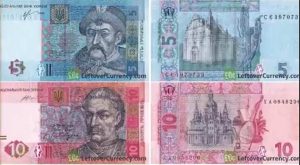
What is Kiev famous for?
Kiev is famous for its historical and architectural landmarks, which draw tourists worldwide. Its most well-known sites are the UNESCO World Heritage-listed Saint Sophia Cathedral, its intricate mosaics and frescoes, and the Kyiv Pechersk Lavra, a historic Orthodox Christian monastery complex. The city’s vibrant street life, bustling markets, and diverse culinary scene add to its allure, making it a captivating destination for travelers seeking a rich cultural experience.
What is unique about Kiev?
Kiev’s uniqueness lies in its blend of ancient history and modern urban life. As one of the oldest cities in Eastern Europe, it boasts a wealth of historical sites, such as the remnants of the Golden Gate, the original entrance to the city. At the same time, Kiev is a thriving contemporary metropolis with a dynamic arts scene, bustling cafes, and vibrant nightlife. Its distinctive skyline, characterized by a mix of Byzantine, Baroque, and modern styles, reflects the city’s diverse architectural influences and resilience in adversity.
Exploring Ukrainian Cuisine
What is Kiev food?
A popular Kiev food is the famous dish known as Chicken Kiev. It is a delicious and indulgent meal made from a tender chicken breast pounded flat, filled with a generous portion of garlic and herb butter, then coated in breadcrumbs before being fried or baked to golden perfection. When cooked correctly, the dish offers a mouthwatering combination of crispy exterior and tender, juicy chicken, with the fragrant butter oozing out upon cutting into it.
Is Kiev a Russian dish?
Although Chicken Kiev is widely associated with Ukrainian cuisine, its origins are subject to debate. Some believe it was first created in Russia, inspired by French haute cuisine, and later adopted by Ukrainians. Others claim that it has always been an inherently Ukrainian dish. Regardless of its origins, Chicken Kiev is firmly entrenched in Ukrainian culinary tradition and is celebrated as one of the country’s signature dishes.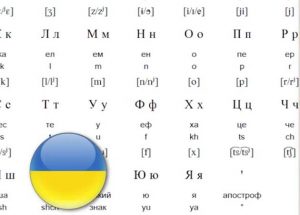
Why is it called a Kiev?
The exact reason why the dish is called Chicken Kiev remains uncertain. One theory suggests that it was named after the city of Kiev, either because it was created there or popularized in the city’s restaurants. Another possibility is that the name was coined by restaurants in Europe or the United States as a way to lend an exotic, Eastern European flair to the dish. Despite these uncertainties, the name Chicken Kiev has become synonymous with the delicious, butter-filled chicken breast that has captured the hearts and palates of diners worldwide.
Why is chicken Kiev?
The term „chicken Kiev“ refers to the specific preparation and presentation of the chicken in this iconic dish. By flattening the chicken breast, filling it with flavored butter, and encasing it in a crispy breadcrumb coating, the dish offers a unique combination of textures and flavors that has made it a beloved part of Ukrainian cuisine. The „Kiev“ in its name ties the dish to its possible origins or associations with the Ukrainian capital. It distinguishes it from other chicken dishes, giving it a distinct identity in the culinary world.
Uncovering Interesting Facts About Ukraine
What are 3 interesting facts about Ukraine?
- Ukraine has the third-most beautiful language in the world, according to a poll conducted by the International Linguistic Association. The harmonious and expressive nature of the Ukrainian language has captivated speakers and listeners alike.
- The country boasts more than 50 references in the Guinness Book of World Records, showcasing Ukrainians’ incredible talents and achievements in various fields, from sports to the arts and beyond.
- Inhabitation in Ukraine dates back to the fifth century BC, making it a land with a rich history and a diverse cultural heritage that has evolved over millennia.
Home to the second-deepest subway station in the world
Ukraine is home to the Arsenalna Metro Station, located in its capital city, Kiev. At a staggering depth of 105.5 meters (346 feet) below ground, it is the second-deepest subway station in the world. The station opened in 1960 and required passengers to take two long escalator rides to reach the platforms. Despite its depth, Arsenalna Metro Station is a busy transit hub, serving thousands of commuters daily.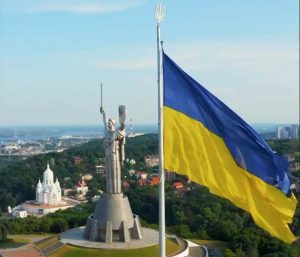
The world’s most extended wind instrument
The „trembita“ is a traditional Ukrainian wind instrument made from a long wooden tube, often crafted from a single piece of wood. It holds the title of the world’s most extended wind instrument, with some examples measuring over 4 meters (13 feet) in length. Used by Hutsul shepherds in the Carpathian Mountains, the tremble produces a powerful, resonant sound that can carry for several kilometers, making it an essential communication tool in the region’s rugged terrain.
A geographic center of Europe
Ukraine has the unique distinction of being home to one of the several locations claiming to be Europe’s geographic center. Near the small town of Rakhiv in the Carpathian Mountains, a monument marks the exact point that, according to some calculations, lies at the continent’s center. While the title is contested, with other European locations also claiming to be the center, this fact highlights Ukraine’s central position within the continent and its historical role as a bridge between Eastern and Western Europe.
High record number of people at a concert
Ukraine holds an impressive record for hosting one of the largest concert audiences in history. In 1996, the renowned French composer and performer Jean-Michel Jarre staged a spectacular concert in Kiev to celebrate the city’s 1,500th anniversary. Over 3.5 million people attended the event, which took place in front of the historic St. Sophia Cathedral, making it one of the most significant concerts in terms of audience size ever held.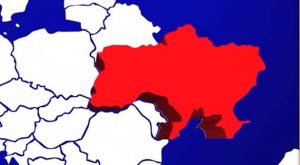
Three Ukrainian monasteries have Lavra status.
Lavra, a prestigious title given to large and significant monasteries, is held by three monastic complexes in Ukraine. The Kyiv Pechersk Lavra, also known as the Kiev Monastery of the Caves, is an impressive historical and cultural site founded in the 11th century. The Pochayiv Lavra, located in the western part of the country, is another important religious center known for its miraculous icon of the Virgin Mary. Lastly, the Sviatohirsk Lavra, situated along the picturesque banks of the Seversky Donets River, has played a significant role in Ukraine’s spiritual and cultural life since the 16th century.
Inhabitation dates back to the fifth century BC.
The territory of present-day Ukraine has a long and storied history of human inhabitation, dating back to the fifth century BC. Archaeological findings have uncovered remnants of ancient settlements belonging to the Scythians and Sarmatians and evidence of the tremendous Trypillian culture, which thrived in the region between 4,000 and 3,000 BC. This rich history has shaped the country’s unique cultural identity, blending various influences over the centuries.
Third-most beautiful language in the world
The International Linguistic Association has recognized the Ukrainian language as the third-most beautiful language in the world. This ranking takes into account its lyrical and expressive qualities, as well as its unique phonetic and grammatical structures. The language’s beauty, combined with a rich literary tradition, has helped preserve and promote Ukraine’s cultural heritage domestically and internationally.
More than 50 references in the Guinness Book of World Records
Ukrainians have a strong presence in the Guinness Book of World Records, with over 50 entries showcasing the remarkable talents and accomplishments of the country’s citizens. These achievements range from athletic feats to artistic prowess, highlighting the diverse skills and creativity of the Ukrainian people. Some notable examples include the world’s largest painting created with a single brush stroke, the longest dance marathon, and the highest-altitude tightrope walk.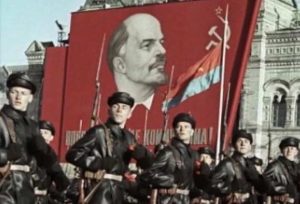
Opening of the first university in Eastern Europe
Ukraine is home to the first university established in Eastern Europe: the Ostroh Academy. The institution was founded in 1576 by Prince Konstanty Wasyl Ostrogski and played a significant role in shaping the region’s intellectual and cultural landscape. The academy, which offered a humanistic curriculum, attracted scholars from various countries, helping to disseminate knowledge and promote cross-cultural exchange throughout Eastern Europe. Today, the Ostroh Academy continues to operate as a National University, preserving its rich academic heritage.
Wedding bands on their right hand rather than their left
In Ukraine, wearing wedding bands on the right hand is a unique cultural practice that sets it apart from many other countries. This custom has its roots in Orthodox Christian beliefs, which associate the right hand with blessings, virtue, and the divine. By wearing wedding rings on the right hand, couples symbolize the sanctity of marriage and the divine blessings they seek for their union.
The second-most frequented McDonald’s in the world.
Ukraine is also home to the world’s second-most frequented McDonald’s restaurant, located in the heart of Kyiv. Since opening in 1997, this fast-food outlet has become an iconic landmark for locals and tourists. The popularity of this particular McDonald’s can be attributed to its prime location, affordability, and the unique experience it offers, which includes a seating capacity of over 700 and a play area for children.
Ukraine’s International Relations
Is Ukraine in NATO?
Ukraine is not currently a member of NATO, the North Atlantic Treaty Organization. However, the country has pursued closer ties with the alliance since the early 1990s. In 2008, NATO members agreed that Ukraine could eventually join the organization, but no specific timeline has been set. In recent years, Ukraine has participated in various NATO-led military exercises and received support for defense reforms. While full membership remains uncertain, cooperation between Ukraine and NATO continues to grow.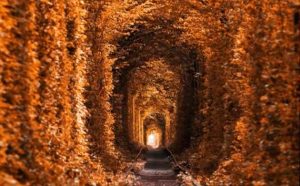
Why is the flag half blue, half yellow?
The flag of Ukraine features two equal horizontal bands: the top half is blue, representing the sky, and the bottom half is yellow, symbolizing the country’s golden wheat fields. This simple yet powerful design conveys the beauty and fertility of Ukraine’s landscape and its abundant natural resources. The blue and yellow colors also hold historical significance, as they have been associated with the Ukrainian people since the 12th century. The flag symbolizes national pride, reflecting the country’s rich cultural heritage and aspirations for a bright future.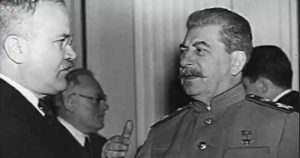
Conclusion: Despite the ongoing conflict with Russia, Ukraine remains a fascinating and resilient country. Its rich history, unique culture, and breathtaking landscapes continue to captivate people’s hearts worldwide. This article has shed light on 50 amazing facts about Ukraine, from the enchanting city of Kiev to its delicious cuisine and intriguing customs. We hope you enjoyed this journey through the heart of Eastern Europe and have a deeper appreciation for this great nation.

Marta Savova is a journalist, health, technolgy and science writer. With over 20 years of experience in the field, she has published numerous research papers and articles and has a passion for sharing his knowledge with others. He is a regular contributor to several media.
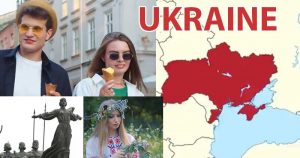
While I appreciate the effort put into this article, mentioning Ukraine’s thriving IT industry is essential. Our country has become a significant hub for software development and outsourcing, attracting global companies and fostering innovation in the tech sector
You’ve done a decent job with the article, but you could’ve mentioned the Holodomor, a manufactured famine in the 1930s that resulted in the deaths of millions of Ukrainians. It’s essential to the nation’s history and should be noticed.
Great read, but I have to point out that there’s some debate around the ranking of the Ukrainian language as the third-most beautiful in the world. While it’s undoubtedly melodic and expressive, beauty is ultimately subjective, and opinions on this matter can vary widely.
I enjoyed the article, but I wish you had mentioned the Tunnel of Love in Klevan! It’s a naturally formed tunnel with trees and foliage that’s become a popular destination for romantic strolls and stunning photography
Interesting article, but I think you missed mentioning the unique architectural style of many Ukrainian wooden churches, known as the „Hutsul style.“ They are indeed a sight to behold and a testament to the country’s rich cultural heritage.